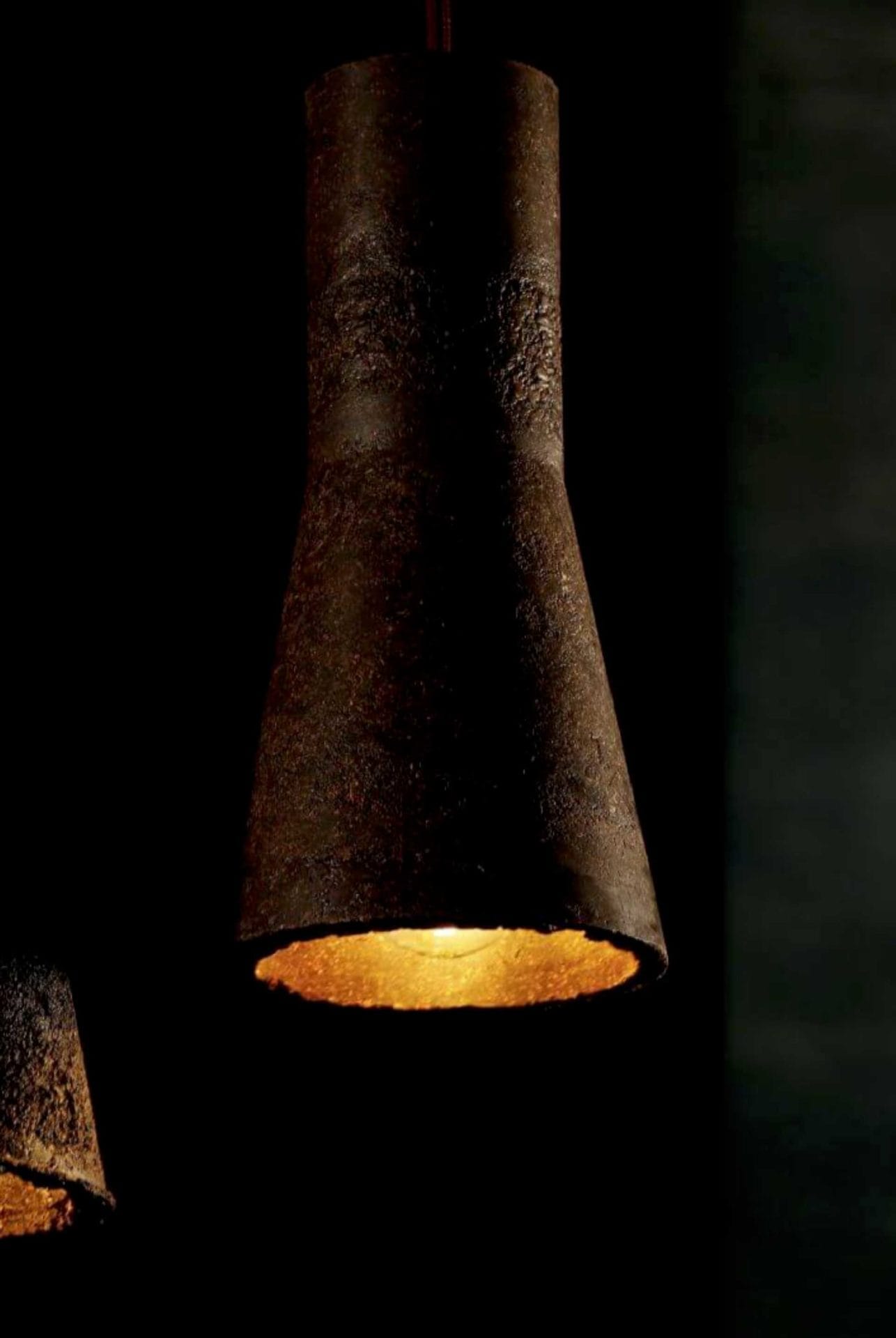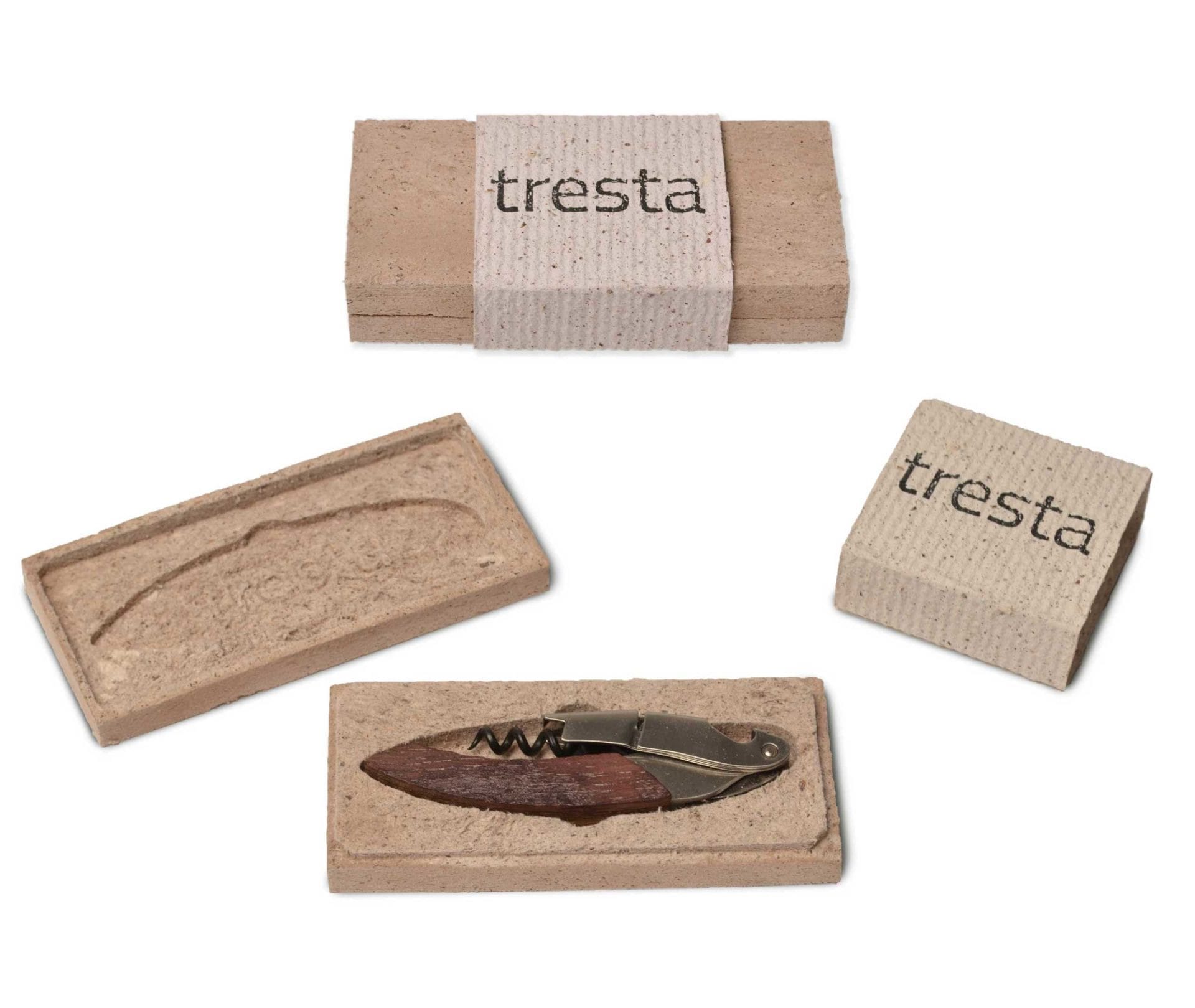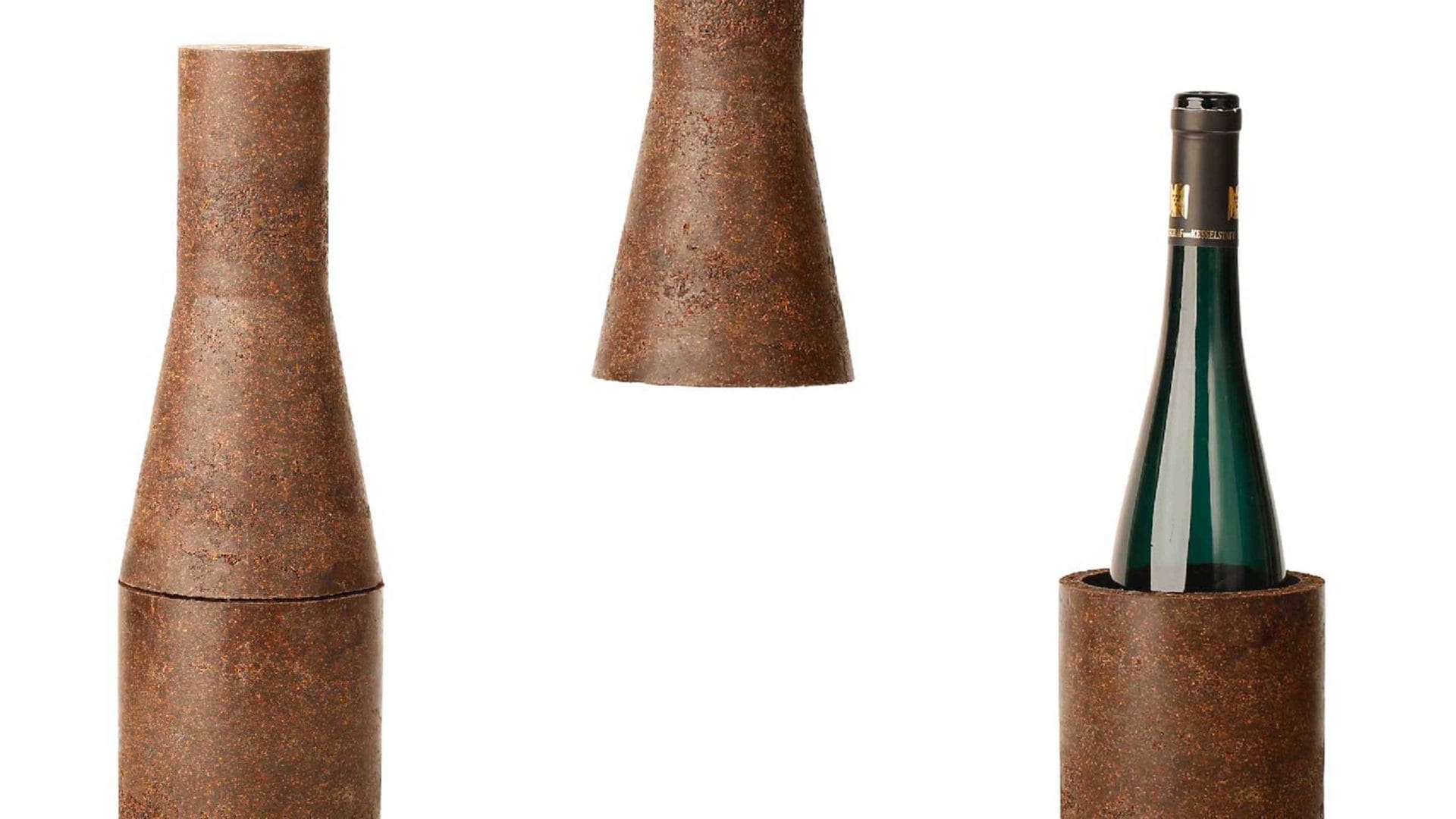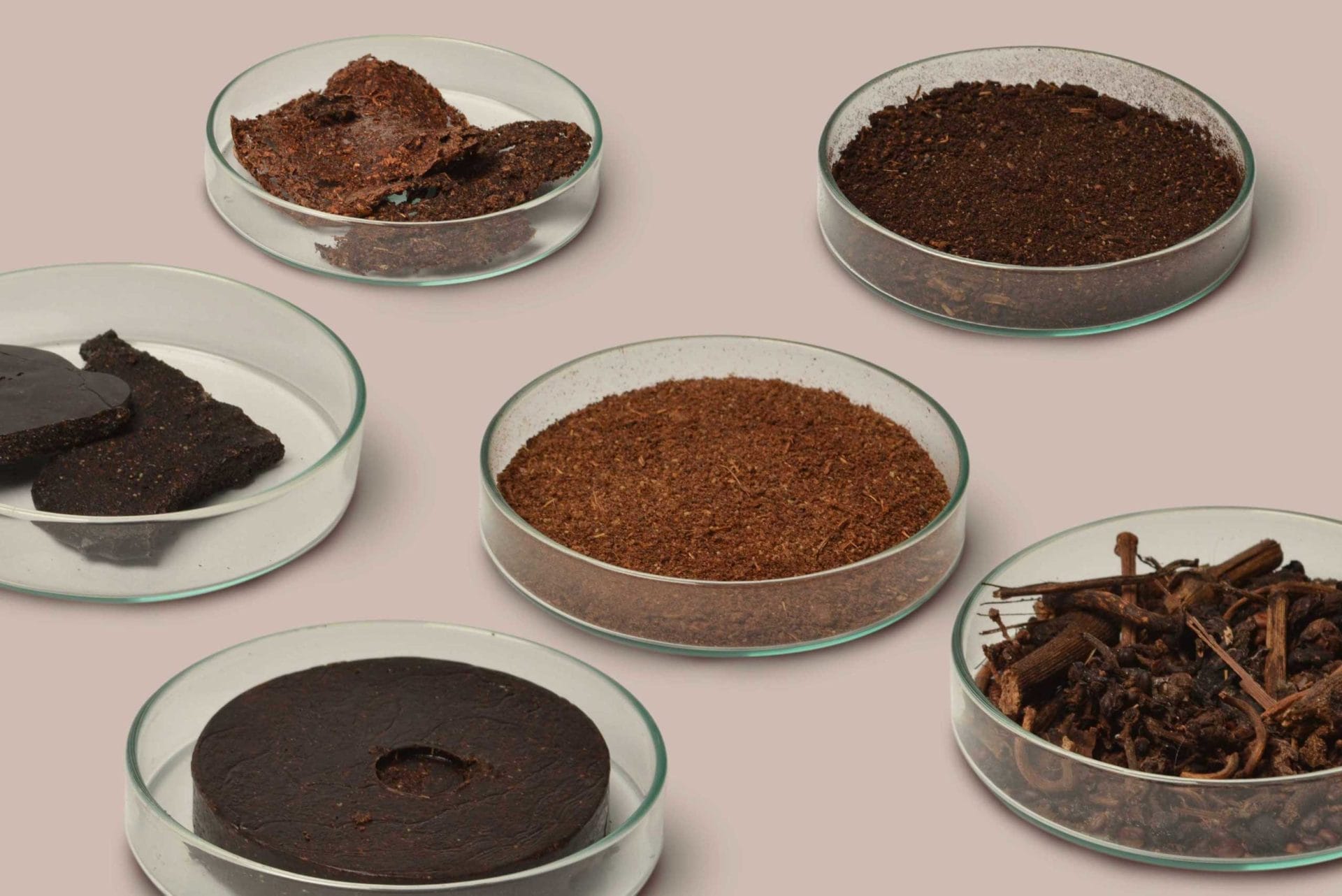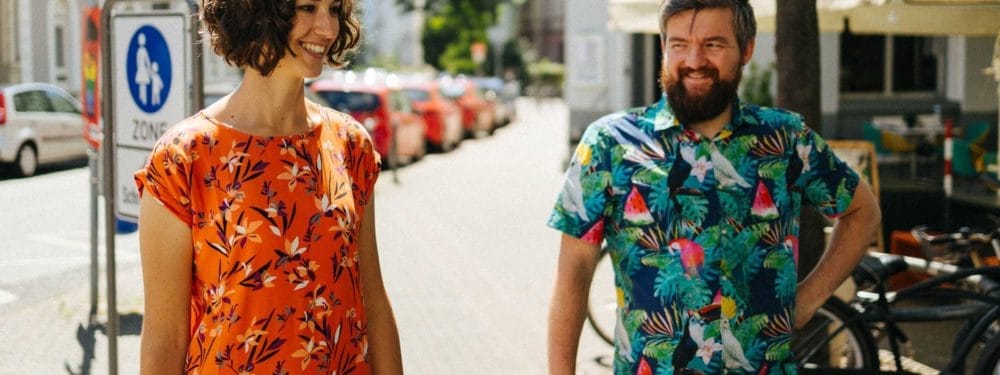Cradle to Cradle – tresta® by Katharina Hölz
No, they don’t love him. He’s a nuisance. Residual mass, leftover, waste. But it has to go somewhere, the unloved pomace.
What is left after the grapes have been pressed. You, the winemaker, could use it to distill the schnapps of the same name. But people can’t drink that much to be able to use all the marc to a high percentage. In Germany alone, 200,000 tonnes of grape press residues are produced every year. So the winemakers dispose of their seeds, stems and shells. Preferably in your own vineyard. Doesn’t really help, but it doesn’t do any harm either.
Katharina Hölz had a better idea. She studied communication design at Trier University of Applied Sciences. As part of her master’s project, she researched sustainable resources, specifically those typical of the region, which are not needed and are available like sand on the beach. And literally so: she had read that designers from the coastal city of Shanghai were making stools out of sand. Why should comparable things not be possible in their home region! After all, there are plenty of marcs on the Moselle. What followed was an intensive search. This is because a composite material is needed to turn pomace into a material that can be processed. And it was not so easy to find. It began months of laboratory work and trial and error in the cellar at home.
“We should start thinking in closed cycles – there is no waste, only biomass that wants to be used. That’s why my ambition was to develop new materials and products that are naturally renewable and biodegradable.” Katharina Hölz
It was important to her that the binder was also of natural origin and biodegradable. Numerous experiments crystallized four materials that harmonize independently with pomace: Beeswax, carnauba wax, newspaper pulp and bioplastics. All these compounds bear the name tresta®. Katharina Hölz developed several products with these composite materials. For example, a lamp and a wine cooler that, when placed on top of each other, create the shape of a mallet bottle typical of the Moselle. Or wall tiles that reproduce the relief of the terraced Moselle in abstract form – an eye-catcher not only in wine taverns. She also created organic packaging from tresta®. Thus, the waiter’s knife for opening wine bottles finds its place in a “wine” box. In this way, the seemingly worthless pomace became commodities of value. These are also convincing from an aesthetic point of view. This is confirmed to Katharina Hölz by juries of renowned design competitions. Since completing her master’s project in the summer of 2017, she has been winning awards in series. For example, she was a Red Dot Award Winner 2018 for Product Design, was a German Design Award Nominee 2018, received a special recognition at the Lucky Strike Junior Designer Award and won the Design Award of the State of Rhineland-Palatinate in the category “Product Design Design Talents / Design Studies & Research”. Most recently, in spring 2020, it beat international entries from 25 nations in the Material segment of the Green Product Awards. Of course, the press also became aware of them. Several articles appeared, and as a result Katharina Hölz received a number of inquiries as to where the pomace products could be purchased.
In view of such a response, the idea matured in her mind to go to market with tresta®. This is where the Frankfurt-based food packaging agency MILK. comes in. Its founder and managing director Andreas Milk sees his company as an “innovation lab”, i.e. a place where forward-looking ideas are tried out. When the recent Master’s graduate applied to work as a packaging designer at his agency in the fall of 2017, it was clear to him that she would be a perfect fit for the team. Moreover, Andreas Milk recognized the potential that lay in tresta®. Therefore, it was no question for him to enable his new employee to drive her project forward alongside her job. In practice, Katharina Hölz works for the agency four days a week. She uses the fifth working day to get her products ready for the market, to create prototypes, to do acquisition work, to conduct negotiations with interested retailers, vintners and restaurateurs, and thus to create the conditions for the sales launch of tresta® to be a success.
